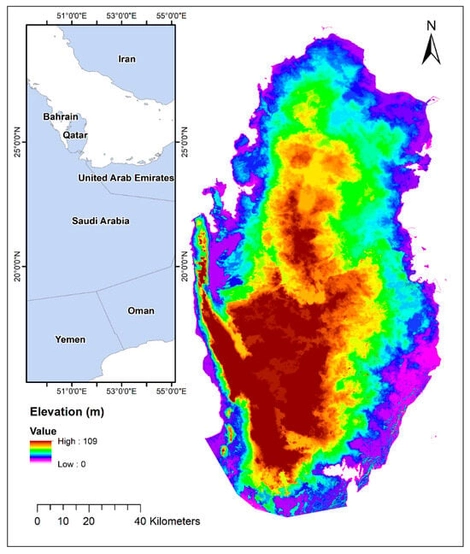- Article
Assessing Coastal Vulnerability to Sea Level Rise in Qatar: An Index-Based Approach Using Analytic Hierarchy Process
- Ali Nasser A. A. Ba-Khamis,
- Hazrat Bilal and
- Tareq Al-Ansari
Sea level rise (SLR) is a global phenomenon impacting coastlines worldwide, with its effects varying according to local geophysical and climatic conditions. The Arabian Gulf, characterized by hyper-arid conditions and low-lying coastal zones, is particularly vulnerable to SLR. This includes the eastern Arabian Peninsula, where densely populated cities and critical infrastructure in countries such as Iraq, Kuwait, Saudi Arabia, Bahrain, Qatar, and the United Arab Emirates (UAE) face increasing risk. This study assesses the potential impact of SLR on Qatar’s coastline using CVI, which integrates both physical and socio-economic parameters. The analysis separately calculates the Physical Vulnerability Index (PVI) and the Socio-Economic Vulnerability Index (SVI), which are then combined to produce the final CVI score. Each variable is assigned a semi-quantitative score on a scale from 1 to 5, representing a gradient from very low to very high vulnerability. To determine the relative importance of each variable, the AHP is employed as a weighting method. The findings reveal that the majority of Qatar’s coastline falls within the high to very high vulnerability categories, with the exception of Doha, which is classified as low risk due to extensive coastal modifications and protective infrastructure. In contrast, areas such as Al Khor and Ras Laffan in the north and northeast, as well as Dukhan and Al Zubarah in the west, exhibit considerably higher vulnerability. These results highlight the urgent need for continued assessment of SLR impacts and the development of targeted adaptation and resilience strategies to safeguard Qatar’s coastal zones.
17 November 2025






